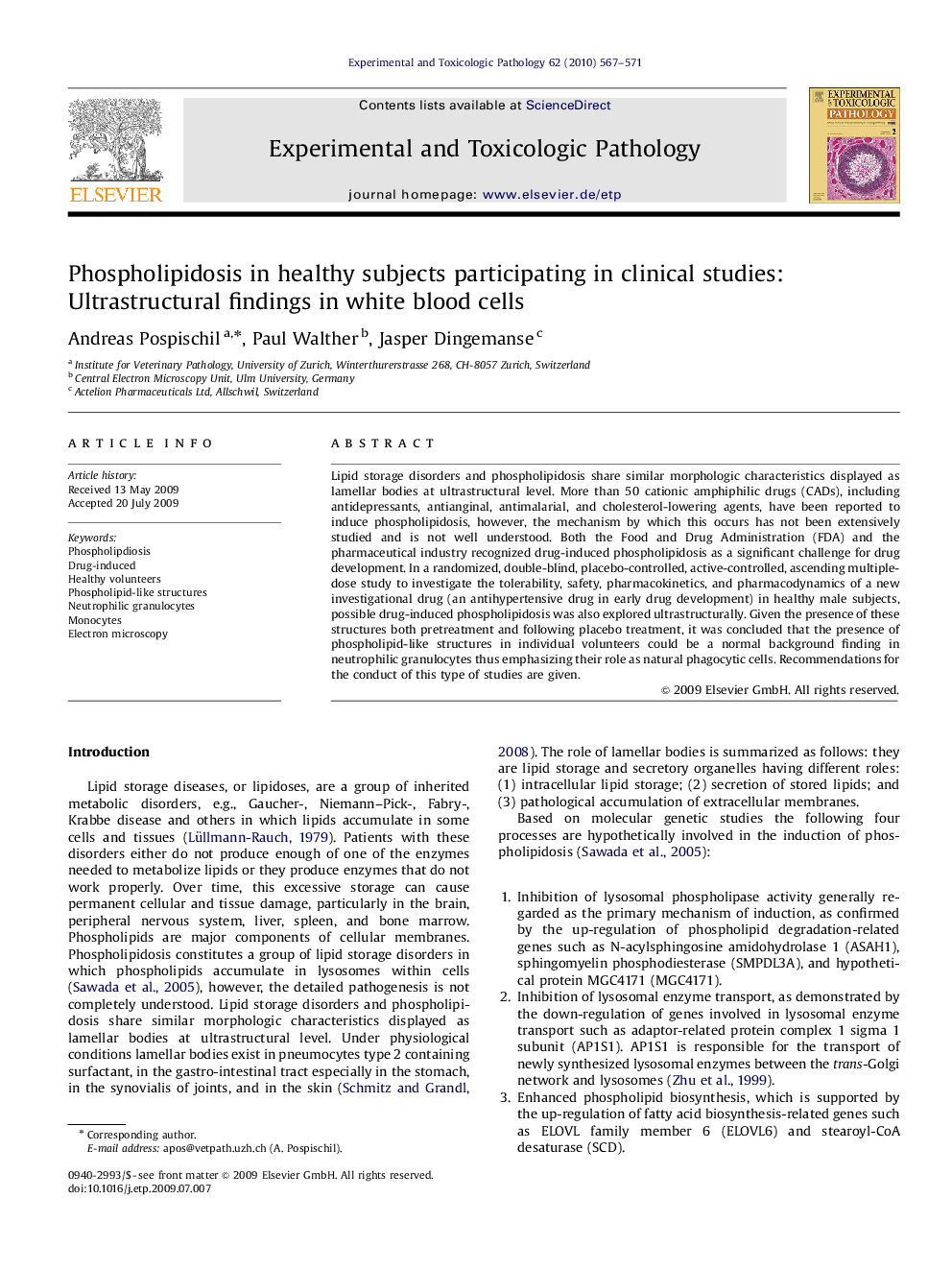| کد مقاله | کد نشریه | سال انتشار | مقاله انگلیسی | نسخه تمام متن |
|---|---|---|---|---|
| 2499577 | 1116517 | 2010 | 5 صفحه PDF | دانلود رایگان |

Lipid storage disorders and phospholipidosis share similar morphologic characteristics displayed as lamellar bodies at ultrastructural level. More than 50 cationic amphiphilic drugs (CADs), including antidepressants, antianginal, antimalarial, and cholesterol-lowering agents, have been reported to induce phospholipidosis, however, the mechanism by which this occurs has not been extensively studied and is not well understood. Both the Food and Drug Administration (FDA) and the pharmaceutical industry recognized drug-induced phospholipidosis as a significant challenge for drug development. In a randomized, double-blind, placebo-controlled, active-controlled, ascending multiple-dose study to investigate the tolerability, safety, pharmacokinetics, and pharmacodynamics of a new investigational drug (an antihypertensive drug in early drug development) in healthy male subjects, possible drug-induced phospholipidosis was also explored ultrastructurally. Given the presence of these structures both pretreatment and following placebo treatment, it was concluded that the presence of phospholipid-like structures in individual volunteers could be a normal background finding in neutrophilic granulocytes thus emphasizing their role as natural phagocytic cells. Recommendations for the conduct of this type of studies are given.
Journal: Experimental and Toxicologic Pathology - Volume 62, Issue 5, September 2010, Pages 567–571